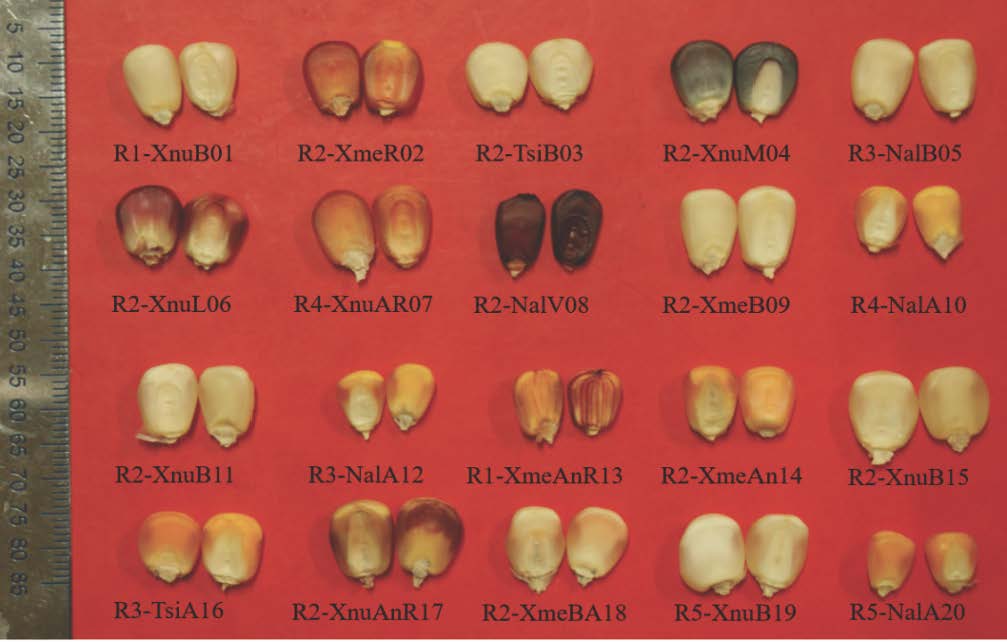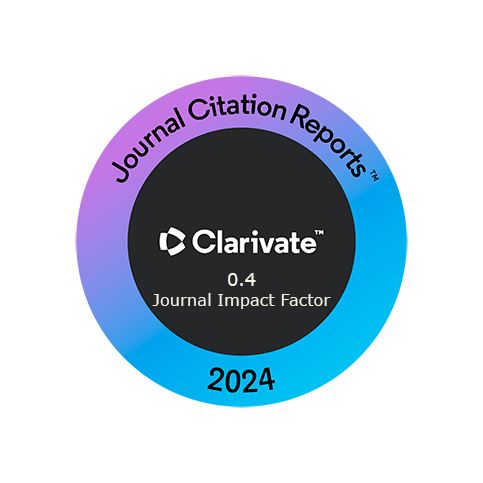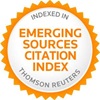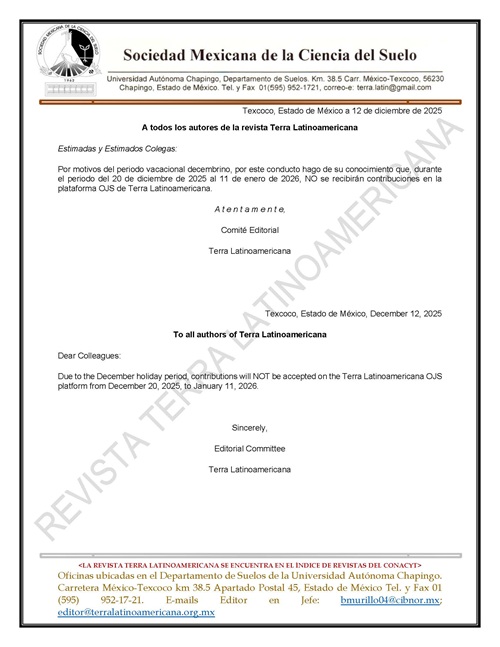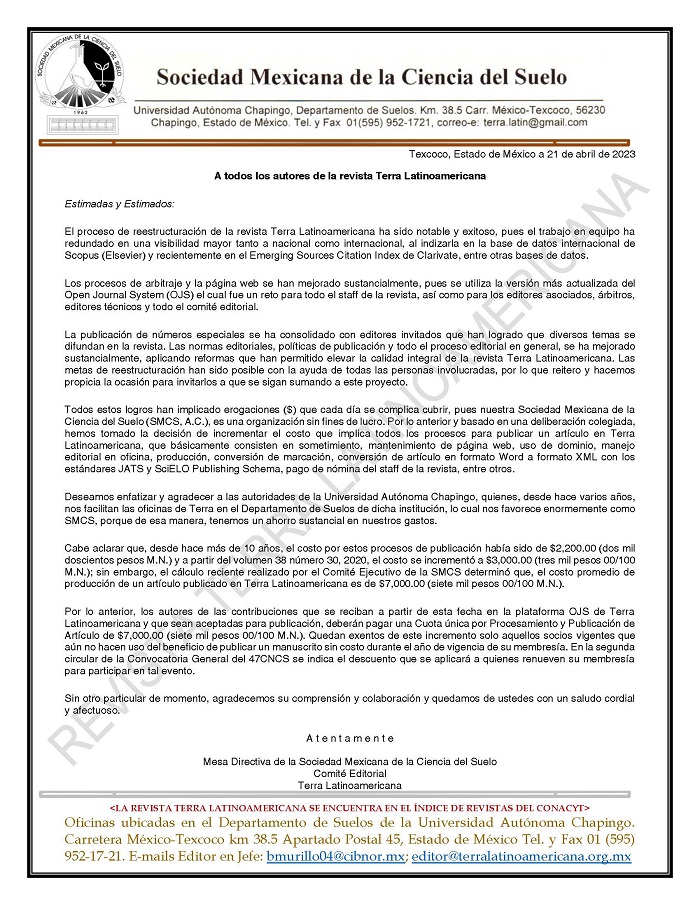Mineral content of landraces maize from Yucatán: analysis by µ-Fluorescence X-ray
DOI:
https://doi.org/10.28940/terra.v39i0.454Keywords:
nutritional quality, mineral composition, nutrients, Zea maysAbstract
In Yucatán, maize (Zea mays L.) is considered the main crop in the maize field, followed by squash, beans and pepper. Maize is found in the basic diet because of its contribution of active compounds, vitamins and essential minerals. Thus, the objective of this work is to characterize different maize landraces in terms of mineral composition cultivated in different regions of Yucatan for the selection of maize populations, which could have a potential use for biofortification and genetic improvement. Mineral analysis was performed by μ-X-Ray Fluorescence (μ-XRF, M4 Tornado 100) for the detection of macro- (P, K, S, Ca, Mg and Na) and micro-(Mn, Fe, Zn, Cu and Se) nutrients in 20 maize genotypes from five Yucatán regions (R1: Tixmehuac, R2: Chacsinkin, R3: Peto, R4: Motul and R5: Maní) of the races Nal t’eel (5), Ts´íit bakal (2), Xmejen-nal (5) and Xnuuk-nal (8). An analysis of variance of the quantified minerals was performed, together with Tukey’s comparison test and honestly significant difference. A dispersion in the total content of macronutrients and micronutrients in each genotype was established. With the average of minerals obtained, a principal component analysis (ACP) was performed. The results indicated significant differences (P ≤ 0.05) in mineral content among the maize genotypes. The mineral dispersion analysis showed that three genotypes of R2 and one of R3 exceeded their own content. The conglomerate analysis showed five groups with different characteristics in their coloration and region. The races Xnuuk-nal and Xmejen-nal cultivated in R2 had the highest mineral content with lilac, orange-red and orange coloration, which could be exploited for maize genetic improvement and biofortification.
Downloads
Publication Facts
Reviewer profiles N/A
Author statements
- Academic society
- Terra Latinoamericana
- Publisher
- Mexican Society of Soil Science, C.A.
